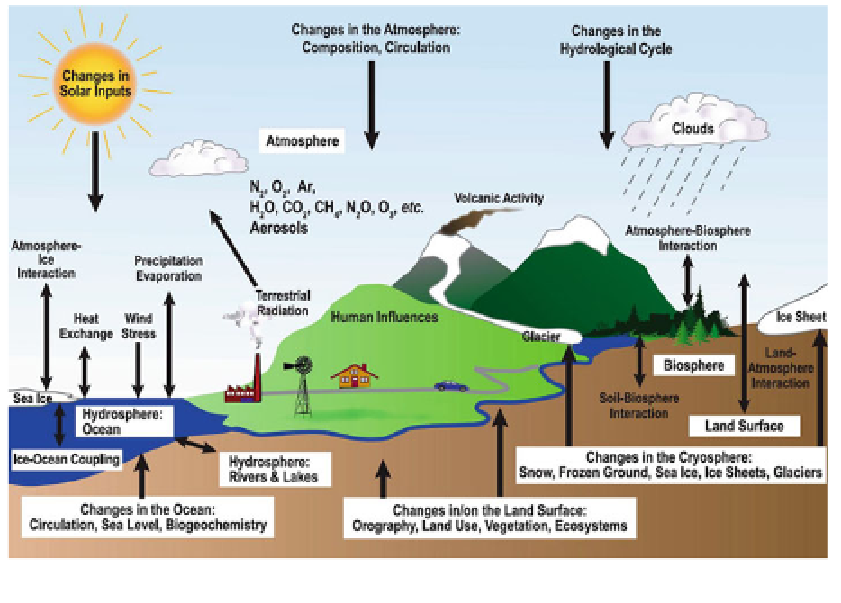Geoscience Reference
In-Depth Information
Fig. 1
Global climate system. Figure from IPCC (
2007
)
variability in soils, vegetation and topography (ranging from metres to kilometres). Pro-
cesses affecting the amount of water stored on land, for example, precipitation and radi-
ation, have spatial scales of kilometres (e.g., associated with weather fronts) and have high
temporal variability (hours).
The amount of water stored in the unsaturated soil zone is generally referred to as soil
moisture, although the exact definition can vary depending on the context. Soil moisture is
one of the key geophysical variables for understanding the Earth's hydrological cycle. It is
classed as an essential climate variable of the Global Climate Observing System (GCOS)
(GCOS-107,
2006
).
Soil moisture determines the partitioning of incoming water into infiltration and run-off.
It directly affects plant growth and other organic processes and thus connects the water
cycle to the carbon cycle. Run-off and base flow from the soil profile determine river flows
and flooding, which connects hydrology with hydraulics. Soil moisture also has a signif-
icant impact on the partitioning of water and heat fluxes (latent and sensible heat), thereby
connecting the hydrological (i.e. water) cycle with the energy cycle.
Soil moisture is a source of water for the atmosphere through evapotranspiration from
land. Evapotranspiration is a major component of the continental water cycle, as it returns
as much as 60 % of the whole land precipitation back to the atmosphere (e.g., Oki and
Kanae
2006
). Furthermore, evapotranspiration is also an important energy flux (Trenberth
et al.
2009
) and is connected to the surface skin and soil temperature, which make up other
important state variables of the land surface system. Together, soil moisture, temperature
and their impacts on the water, energy and carbon cycle play a major role in climate-
change projections (IPCC
2007
; Seneviratne et al.
2010
). Snow on land is another
important variable affecting the global energy and water budgets, because of its high
albedo, low thermal conductivity, considerable spatial and temporal variation and medium-
term capacity for water storage.

